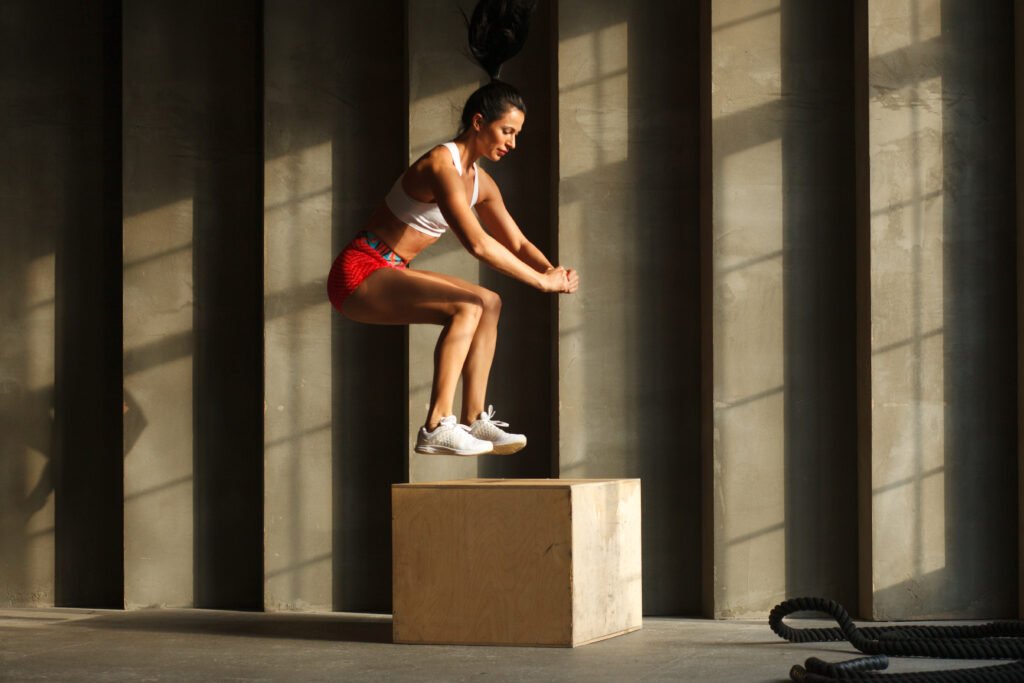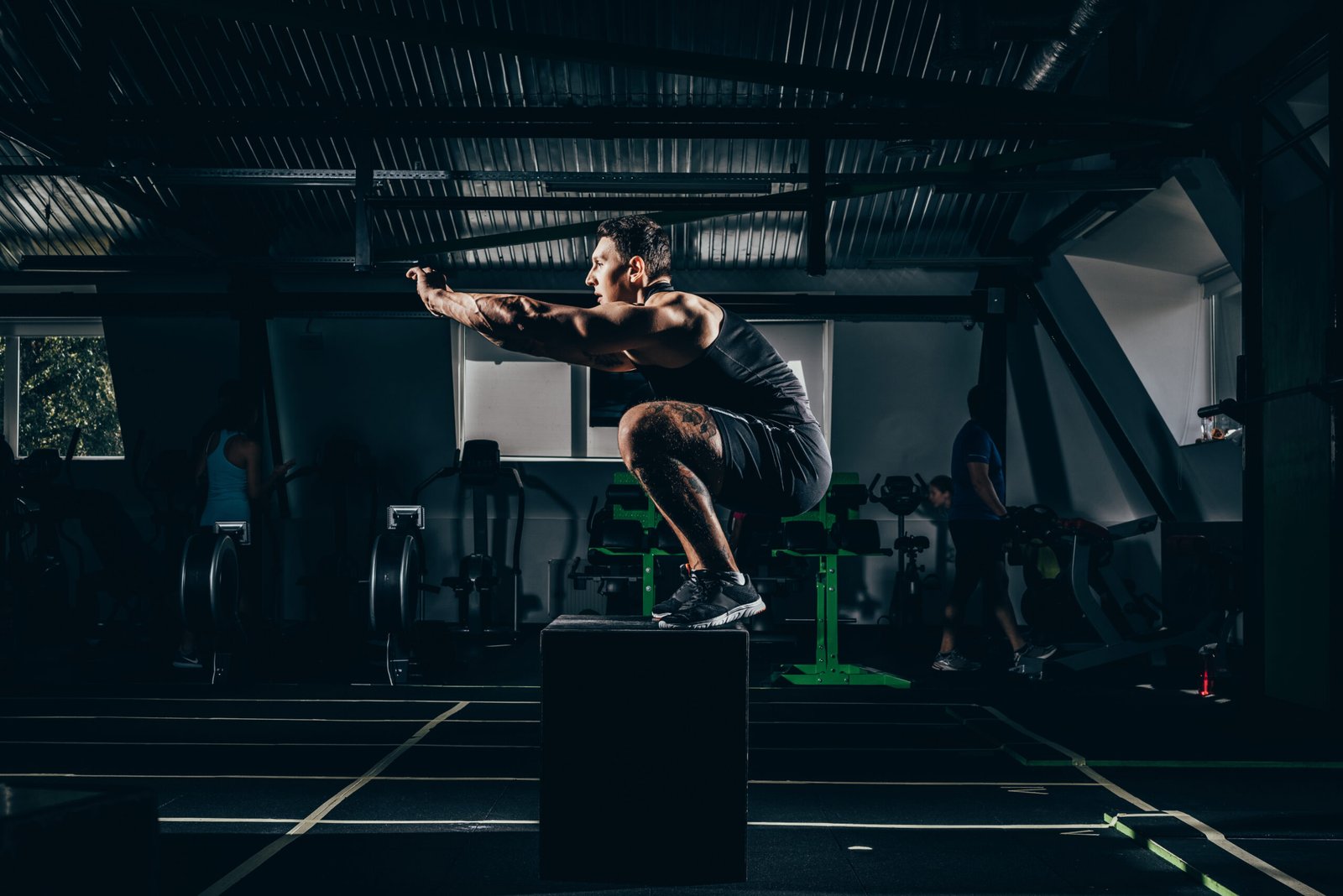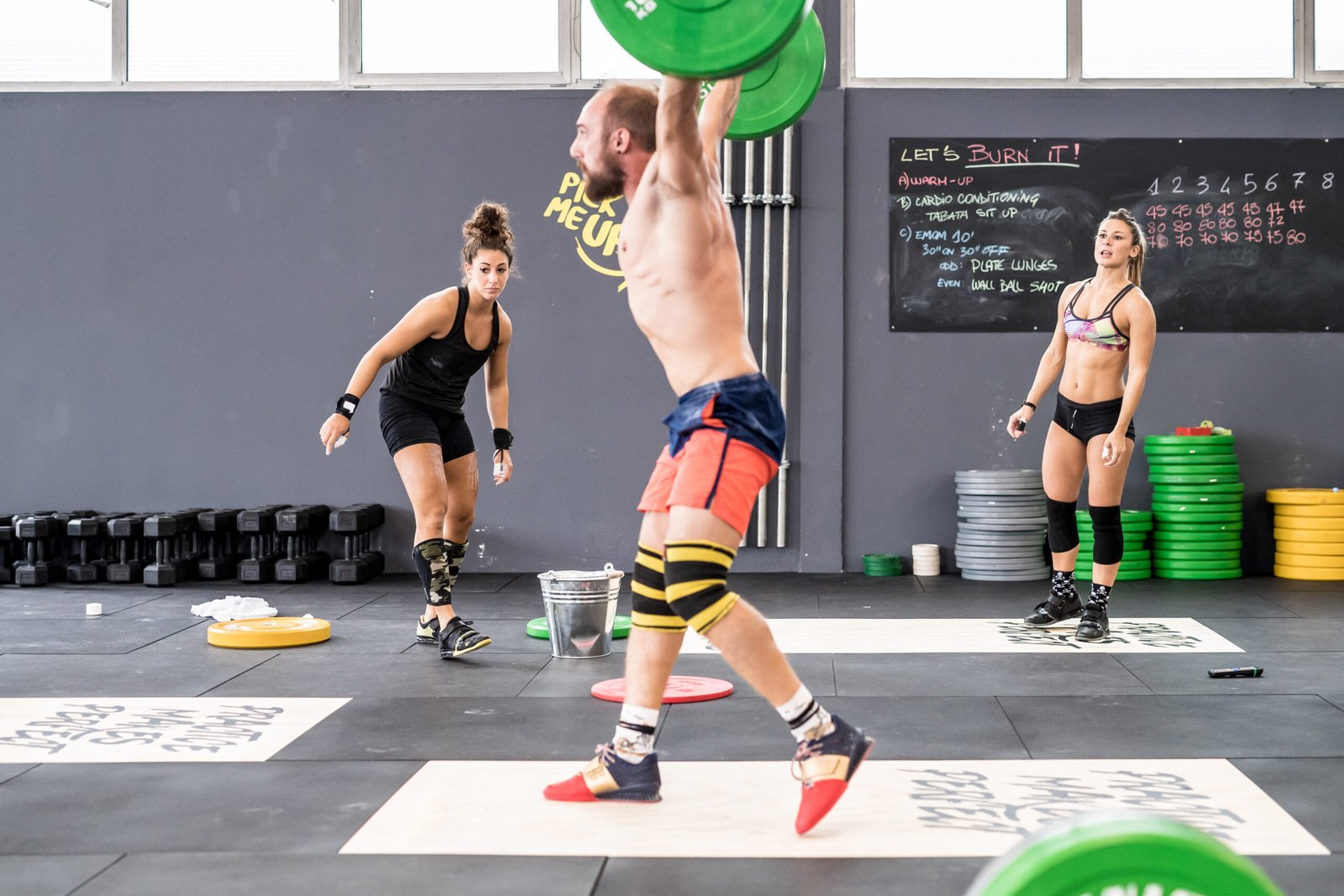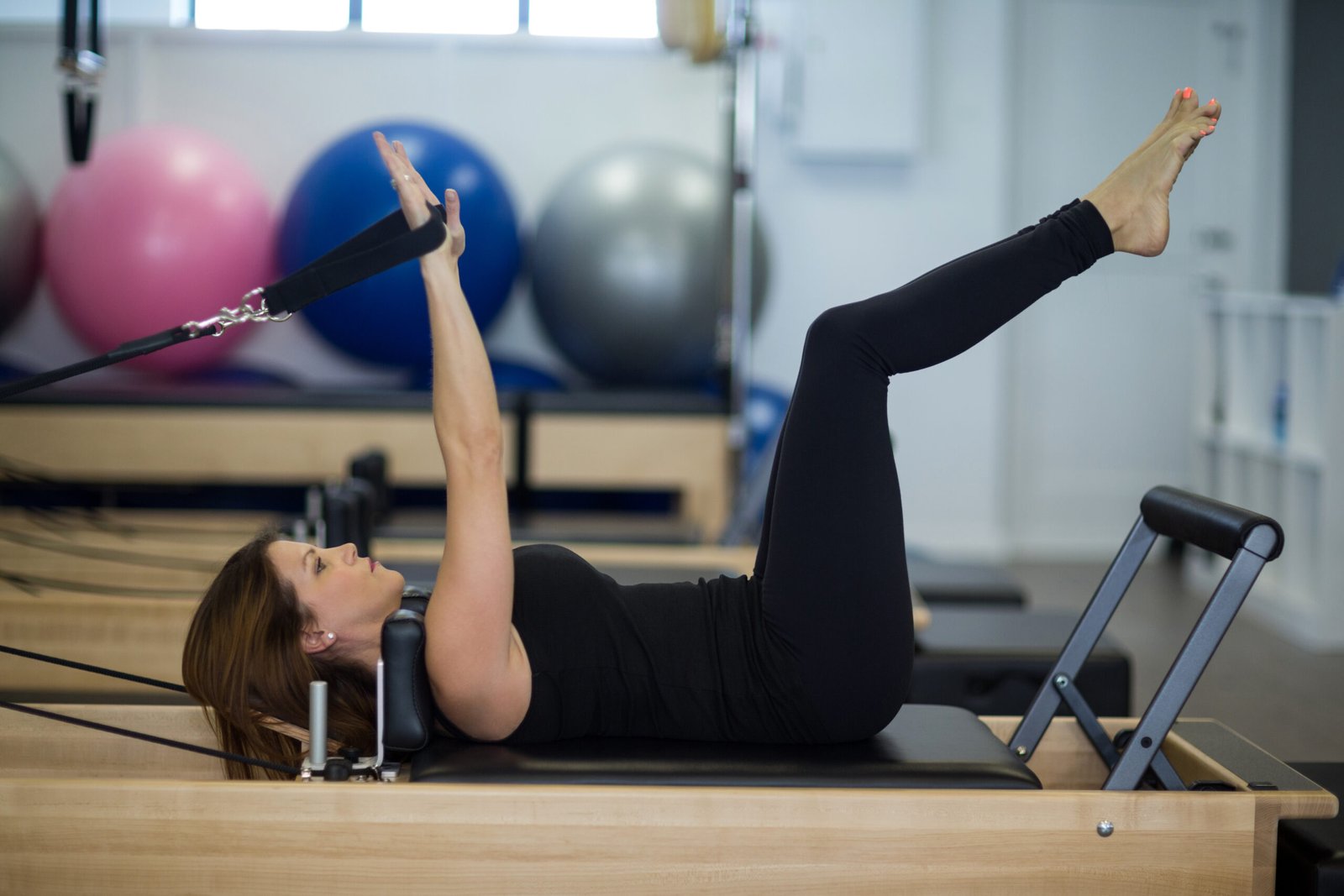In the realm of athletic training, plyometrics stands out as a dynamic and potent method for boosting performance through explosive movements. These movements, designed to enhance muscular power and agility, are essential for athletes striving for an edge in competitive sports. The science of plyometrics delves into how these explosive exercises not only increase speed and jump height but also refine neuromuscular coordination, ultimately leading to a remarkable enhancement of overall athletic capabilities. As more athletes and trainers prioritize this innovative training method, unlocking the power of plyometrics promises to be a game-changer in bridging the gap between current ability and peak performance potential.
What is Plyometric Training?
| Exercise Type | Target Area | Benefits | Examples |
|---|---|---|---|
| Jumping Exercises | Legs and core | Enhances vertical leap and leg power | Box jumps, vertical jumps |
| Bounding Drills | Lower body, cardiovascular | Improves stride length and speed dynamics | Lateral bounds, forward bounds |
| Hopping Sequences | Legs, ankles, and coordination | Develops rhythm, balance, and agility | Single-leg hops, double-leg hops |
Plyometric training is a specialized form of exercise that emphasizes explosive movements, contributing significantly to the enhancement of athletic performance. By incorporating exercises such as jumping, bounding, and hopping, plyometrics improves speed, power, and agility, critically impacting an athlete’s performance capabilities. The primary objective is to increase muscle power through the utilization of the stretch-shortening cycle, a natural process that capitalizes on muscle elasticity and rapid contractions. This training regimen not only fosters muscle power but also refines neuromuscular coordination, thereby enabling athletes to execute movements with greater efficiency and proficiency. By integrating plyometric exercises into an athlete’s routine, there’s a notable improvement in explosive strength and a broader spectrum of physical abilities.
– Jumping exercises: Enhance vertical leap and leg power.
– Bounding drills: Improve stride length and speed dynamics.
– Hopping sequences: Develop rhythm and balance for agility.
In conclusion, plyometric training is a pivotal component in the toolkit of any athlete aiming to elevate their performance through explosive movements and refined coordination.
Why is Plyometric Training Important for Sport?
| Sport | Key Attribute Enhanced | Plyometric Exercises for Improvement | Specific Benefits |
|---|---|---|---|
| Sprinting | Speed and power | Jumping exercises, bounding drills | Boosts stride power and sprint acceleration |
| Basketball | Vertical jump, agility | Vertical jumps, hopping sequences | Improves jump height for rebounds, shot blocks, and dunks |
| Soccer | Speed, agility, and endurance | Bounding drills, jumping exercises | Enhances quick direction changes and sprinting capabilities |
| Volleyball | Jump height, explosive power | Jumping exercises, hopping sequences | Increases block height and jump serve performance |
Plyometric training is crucial for sports as it significantly enhances power and speed, two vital attributes for athletic success. By focusing on explosive movements, athletes gain the ability to generate increased force and velocity, which are essential across a range of sporting disciplines. Moreover, this training method improves neuromuscular coordination by enhancing the interaction between the nervous system and muscles, resulting in smoother and more efficient movement patterns during competitions. Plyometrics also strengthens fast-twitch muscle fibers, boosting strength and agility, thereby empowering athletes to execute rapid movements effortlessly. Additionally, consistent integration of plyometric exercises into training routines elevates overall athletic performance and provides stability, reducing injury risks during intense physical activities.
– Power and speed dynamics: Crucial for sprinting, jumping, and competitive sports.
– Improved coordination: Elevates complex movement execution.
– Reduced injury risk: Strengthens ligaments and tendons to withstand strenuous activities.
Ultimately, the importance of plyometrics is underscored by its capacity to substantially enhance athletic outcomes, making it a fundamental aspect of sports training regimens.
How Does Plyometric Training Improve Performance?

Plyometric training serves as a transformative practice in enhancing athletic performance by increasing neuromuscular efficiency, speed, and power. Through structured coordination between the nervous and muscular systems, this training methodology enables athletes to produce more force in considerably less time. The explosiveness embedded within plyometric exercises propels muscle power essential for rapid sprints, dynamic jumps, and other vigorous movements. Furthermore, plyometrics promotes muscle elasticity, optimizing the energy storage and release processes for more robust actions, and fortifying muscles and joints, thereby mitigating injury risks and boosting stability. The enhanced agility and quick reaction time achievable through this training further enable athletes to rapidly change directions and respond aptly during competitions.
– Neuromuscular efficiency: Expedites force generation and quick movements.
– Speed and power: Critical for competitive performance improvements.
– Joint and muscle fortification: Essential for stability and injury prevention.
Incorporating plyometric exercises into athletic routines significantly sharpens athlete capabilities, proving its indispensable role in achieving peak performance levels.
Plyometrics – The Science of Explosive Strength
| Phase | Description | Impact on Performance | Example Exercises |
|---|---|---|---|
| Eccentric Pre-Stretch Phase | Muscle lengthens under tension before contraction | Enhances muscle elasticity, stores energy | Depth jumps, drop jumps |
| Amortization Phase | Short pause between eccentric and concentric actions | Determines energy transfer efficiency | Box jumps, squat jumps |
| Concentric Shortening Phase | Muscle shortens to produce vigorous movement | Maximizes force generation and power output | Broad jumps, standing long jumps |
Plyometrics represents a scientifically grounded training method emphasizing the cultivation of explosive strength and power through dynamic exercises. At its core, this technique involves rapid stretching and contracting of muscles, thereby enhancing neuromuscular efficiency and speed. Plyometrics bolsters athletic performance notably by heightening jump height, fostering agility, and boosting overall power. Crucially, plyometrics is anchored in scientific principles that explore muscle elasticity, energy storage, and force production dynamics. Mastering the proper technique and adhering to a structured progression plan are pivotal in maximizing performance gains while preventing injuries.
– Explosive strength: Targeted exercises in muscle contraction and expansion.
– Enhanced agility and speed: Core benefits for competitive circumstances.
– Scientific basis: Rooted in energy storage and release principles.
Thus, plyometrics not only enhances an athlete’s explosive power but also roots its success in a solid foundation of scientific understanding and methodology.
The Science Behind Plyometrics
Understanding the scientific framework behind plyometrics unveils the methodology’s profound impact on strength, speed, and power enhancement. Plyometric exercises entail rapid and repeated stretching and contracting of muscles, optimizing the body’s natural stretch-shortening cycle to boost muscle elasticity and generate explosive force. This training enhances neuromuscular coordination, optimizing how nerves and muscles synergize during vigorous activities. Routine engagement in plyometric exercises fosters a marked improvement in athletic performance, enhancing vertical jump heights, sprint speeds, and overall agility. Furthermore, its integration into fitness regimes not only elevates physical prowess but also fortifies muscles and connective tissues to mitigate injury risks.
– Stretch-shortening cycle activation: Amplifies forceful muscle contractions.
– Increased agility: Elevates dynamic movement capabilities.
– Injury mitigation: Strengthens tissues for resilience against strains.
The profound science guiding plyometrics underpins its role as an essential training tool, leading to remarkable athletic improvements.
Eccentric Pre-Stretch Phase

Within plyometrics, the eccentric pre-stretch phase is crucial, serving as the initial stage where muscles lengthen under tension before contraction. This phase markedly enhances muscle elasticity and acts as a reservoir of potential energy, akin to a taut rubber band poised to snap back. The pre-stretching triggers the stretch reflex, a protective mechanism that bolsters muscle power output during the subsequent contraction. Achieving efficiency in this phase is vital for optimizing jump height, sprint speed, and overall explosive power. Mastery of the eccentric pre-stretch can significantly reduce injury risk and maximize performance gains in plyometric training.
– Muscle elasticity: Key for storing and releasing energy effectively.
– Stretch reflex activation: Critical for powerful movement execution.
– Performance optimization: Heightens explosive power potentials.
The eccentric pre-stretch phase is indispensable for athletes seeking to extract the full benefits of plyometric exercises through proper execution and methodical training.
Amortization Phase (Time to Rebound) Phase
The amortization phase, or time to rebound, is a pivotal point within plyometric exercises, representing the brief pause between eccentric and concentric actions. This moment is essential in determining the efficiency of energy transfer needed for executing explosive movements. A shorter amortization phase translates into more effective utilization of stored elastic energy, thereby amplifying power output. Training to minimize this phase’s duration can result in substantial gains in athletic performance. Understanding and optimizing the amortization phase is central to leveraging the full potential of plyometric exercises.
– Energy transfer efficiency: Key for maximizing explosive actions.
– Shortened duration focus: Enhances power production.
– Performance improvement: Drives increased movement efficiency.
For athletes, mastering the amortization phase provides a competitive edge, ensuring powerful and precise execution of plyometric movements.
Concentric Shortening Phase

The concentric shortening phase in plyometrics comprises the phase where powerful muscle contraction follows rapid stretching, with muscles shortening to produce vigorous movements. This phase is paramount for generating maximal force as it exploits the stored elastic energy and reflexive response from the initial eccentric phase. During this phase, muscle fibers contract swiftly, augmenting the force and speed of movements essential for athletic prowess. Mastery of the concentric shortening phase significantly contributes to improving vertical jumps, sprints, and other explosive skills. By prioritizing the training of this phase, athletes can enhance strength and power output, leading to improved performance across multiple sports.
– Maximal force generation: Central for achieving athletic power.
– Elastic energy utilization: Amplifies movement execution.
– Skill enhancement: Focus on jumping and sprinting improvements.
Understanding this phase’s mechanics is vital for athletes aiming to maximize their competitive edge through efficient movement production.
The Benefits of Plyometric Training
| Benefit | Description | Impact on Athletic Performance |
|---|---|---|
| Increased Power | Enhances muscular power and explosiveness | Vital for fast, explosive movements in sports |
| Improved Agility | Refines coordination and quick movement capabilities | Crucial for sports requiring rapid changes in direction |
| Injury Prevention | Strengthens muscles, ligaments, and tendons | Reduces the risk of injury by improving muscle resilience |
| Faster Sprint Times | Improves acceleration and speed | Key for athletes needing quick starts and high velocity |
Plyometric training offers a multitude of benefits, prominently enhancing muscular power and explosiveness vital for sports requiring swift, sharp movements. Additionally, it significantly boosts agility and coordination by training the neuromuscular system to react rapidly, thereby refining overall body control. Remarkably, this training modality increases both speed and acceleration—key advantages for track athletes and participants in fast-paced sports such as basketball and soccer. Furthermore, it supports improved balance and joint stability, ultimately decreasing the risk of injuries associated with high-impact activities. Plyometric exercises can seamlessly integrate into an array of training routines, offering versatility and scalability for athletes across various levels and disciplines.
– Power and explosiveness: Critical for sports performance.
– Enhanced agility: Improves coordination and quick reaction capabilities.
– Injury prevention: Reinforces joint stability and balance.
The benefits derived from plyometric training make it a valuable asset in optimizing athletic outcomes and maintaining a competitive edge.
Safe and Effective Entry into Plyometric Training
| Tip | Description | Key Takeaway |
|---|---|---|
| Start with Strength Training | Foundation of basic strength needed before plyometrics | Build a solid base to avoid injury and enhance plyometric effectiveness |
| Gradual Progression | Start with low-impact exercises and increase intensity over time | Prevent injury and build strength progressively |
| Professional Guidance | Consult a fitness expert to tailor a plyometric program | Ensure exercises align with personal fitness goals and avoid overtraining |
For individuals new to plyometric training, a safe and effective entry is pivotal in ensuring optimal results while minimizing injury risks. The journey begins by establishing a strong foundation through basic strength training before introducing plyometrics into the fitness regimen. Proper technique and form are essential in reducing potential risks while maximizing exercise benefits. It’s crucial to gradually increase exercise intensity and complexity, beginning with lower-impact movements and progressively advancing to more dynamic ones as confidence builds. Adequate rest and recovery between sessions are equally vital, allowing muscles to repair and adapt to the demands of explosive training. Consulting with a fitness professional can help tailor a personalized plyometric program that aligns with specific athletic goals and the current fitness level.
– Foundation building: Start with strength training basics.
– Gradual progression: Move from simple to complex exercises.
– Professional guidance: Ensure personalized and goal-aligned training.
By prioritizing a cautious and calculated approach, athletes can reap the full benefits of plyometric training, enhancing their performance safely.
Tips to Avoid Injury
Preventing injury during plyometric training is a priority for athletes committed to achieving performance success. A thorough warm-up is essential in preparing muscles and joints for the demands of intense plyometric exercises. Maintaining correct form and technique is vital in minimizing stress on the body, effectively reducing injury risk. Incrementally increasing training intensity and volume is a strategic measure in safely fortifying strength and endurance. Allowing sufficient rest and recovery is important in preventing overuse injuries and fostering performance improvements. Incorporating a balanced program that includes strength training, flexibility, and stability exercises enhances overall body resilience, supporting sustainable athletic performance.
– Correct form and technique: Core focus for injury prevention.
– Incremental intensity increase: Safeguards strength building.
– Balanced training regimen: Complements plyometric focus.
By adhering to these guidelines, athletes can maximize their plyometric training outcomes safely while minimizing potential injury risks.
Explosive Power: The Science of Plyometrics and How it Can Improve Your Athletic Performance

Plyometrics focuses on explosive exercises that bolster muscle power and agility, pivotal for enhancing athletic performance. These exercises, integrating jump training, effectively harness the stretch-shortening cycle to sharpen speed and force production. Scientific research substantiates the benefits of incorporating plyometrics into training formats, evidencing noticeable improvements such as increased vertical jumps and faster sprint times. Plyometrics prove advantageous across an array of sports by augmenting overall explosiveness and reducing injury risks resulting from strengthened tendons and muscles. To garner these benefits and avert injury, athletes must maintain proper technique and gradually elevate exercise intensity when embedding plyometric exercises into their routines.
– Explosive improvements: Enhanced muscle power and agility focus.
– Proven scientific basis: Evidence of athletic performance boosts.
– Injury prevention: Strengthening of tendons and muscles.
Plyometrics holds the transformative potential to revolutionize an athlete’s training approach, leading to substantial improvements in performance and competitive success.
Are There Any Issues with Plyometric Training?
While plyometric training offers noteworthy benefits for athletic performance, it also poses risks if not executed correctly. Proper technique and progressive training are indispensable in mitigating muscle and joint strain. Beginners should concentrate on mastering basic movements before transitioning to more complex exercises. Ensuring ample recovery time between sessions is pivotal in averting overuse injuries. Consulting with a fitness professional is an astute strategy for constructing a tailored plyometric training program that meets individual needs safely and effectively.
– Technique mastery: Fundamental to injury prevention.
– Progressive training: Ensures safe transition from basic to complex exercises.
– Professional consultation: Key for personalized training regimens.
By addressing these concerns, athletes can responsibly integrate plyometric training into their routines, optimizing results while safeguarding their well-being.













